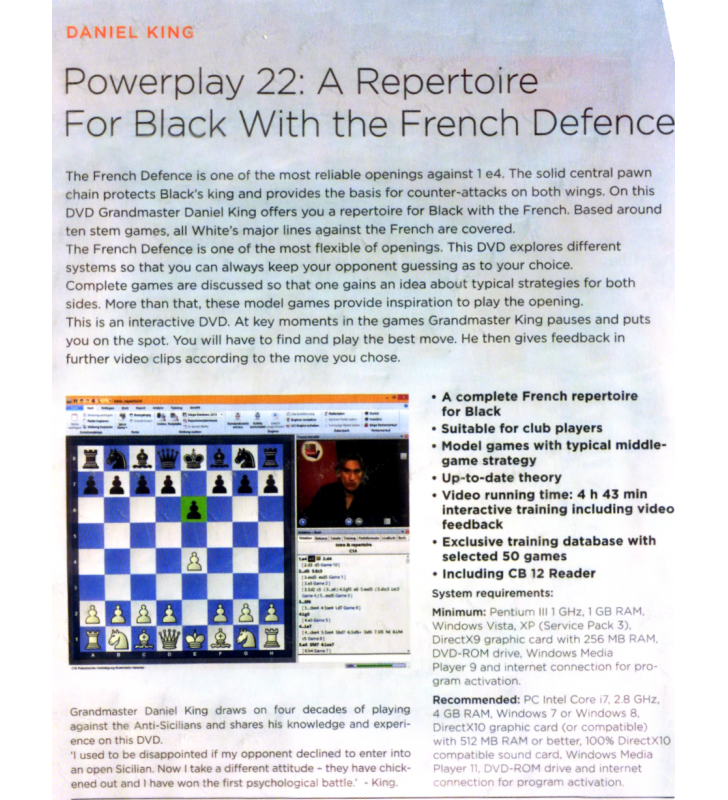Schaakbord Mahonie Opvouwbaar met annotatie
afmeting: 48 x 48 cm
Perfekt met schaakstukken n°5.
 Livraison sous 48 heures via Bpost*
Livraison sous 48 heures via Bpost*
Gratis levering vanaf €69 (België, Frankrijk, Nederland, Luxemburg, Duitsland)
 U kunt uw bestelling annuleren
U kunt uw bestelling annuleren
Veertien dagen lang!
 Beveiligde betalingen
Beveiligde betalingen
Alle betaalkaarten geaccepteerd.
Specifieke referenties
afmeting: 48 x 48 cm
Perfekt met schaakstukken n°5.
Système requis:
Pentium 300 Mhz, 64 Mo RAM, Windows XP, Windows Vista, Windows 7, lecteur DVD-ROM, souris, carte son.
Georgy Lisitsin (1909-72) was a respected Soviet master, theoretician and writer. In 1958 he published a revised edition of his most ambitious work, entitled Strategy and Tactics of Chess, which became one of the most legendary manuals in the Soviet chess school, and no doubt one of the books that motivated the young Bobby Fischer to learn Russian.
Lisitsin broke down Strategy and Tactics into their key constituent elements, enabling players of all levels to study chess systematically, learning from carefully selected game fragments and studies. Key Elements of Chess Tactics and its companion volume Key Elements of Chess Strategy are the first ever complete English translations of Lisitsin’s classic.
In Key Elements of Chess Tactics, Lisitsin illustrates key tactical concepts such as pinning, discovered attacks and checks, deflection, interference and many more, building a foundation before moving on to more complex and beautiful tactical themes. Hardcover 392 pages
This approach is intended to enable the reader to assign himself to one of the player types and find out whether he belongs to the activists or rather to the pragmatists, theorists or reflectors. The result allows to draw conclusions in order to further expand the individual strengths or to develop a more universal playing style overall.
Because even if you usually win thanks to your strengths, it makes sense to work on your own weaknesses as well. Of course, if there is only one move in a position, you should be able to find it. Playstyles are especially important in positions where you have a great choice. However, they also play a role when you choose the type of position, which you should strive for based on your style.
Interestingly, a playstyle can also be imitated, which may even be the appropriate strategy against certain opponents. For example, certain characteristics stand out clearly in activists, and being able to adjust to them as an opponent is of course very valuable. A good example is Kramnik's win over activist Kasparov (at the London 2000 world championship match). Since Kramnik always managed to steer the game in the direction appropriate to his style, his big opponent never had the chance to demonstrate his own strengths in positions with attack and initiative.
While 'The Human Factor' was about a clear distinction of the four playing styles, this book aims to emphasize the universality of each player. After solving the tasks tailored to the four player types, it becomes clear how your own competencies are distributed. Accordingly, GM Vincent Keymer states in his foreword:
"Even if the further development of one's own player personality to a universal player who unites all player types may remain a utopia, it's still worth pursuing."

